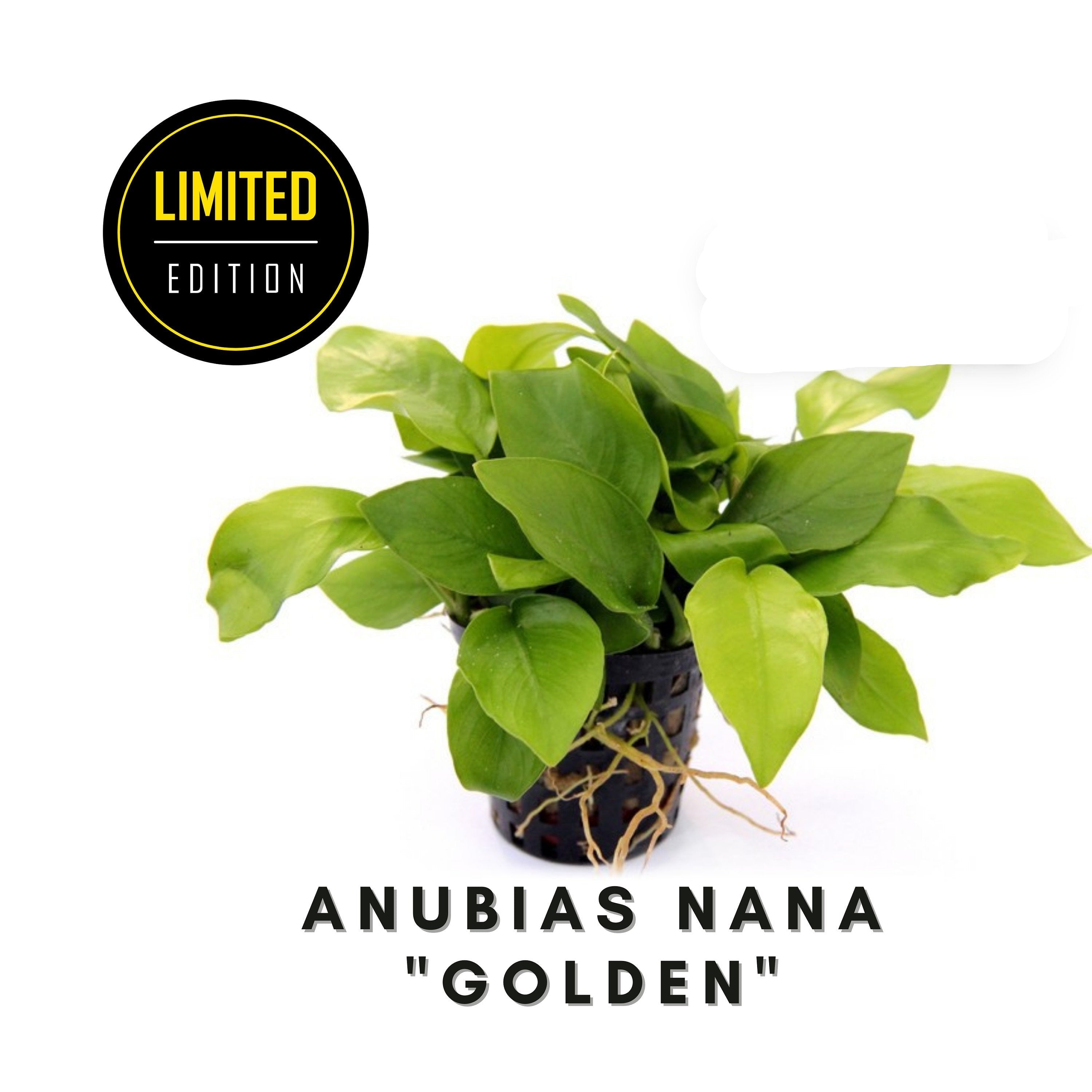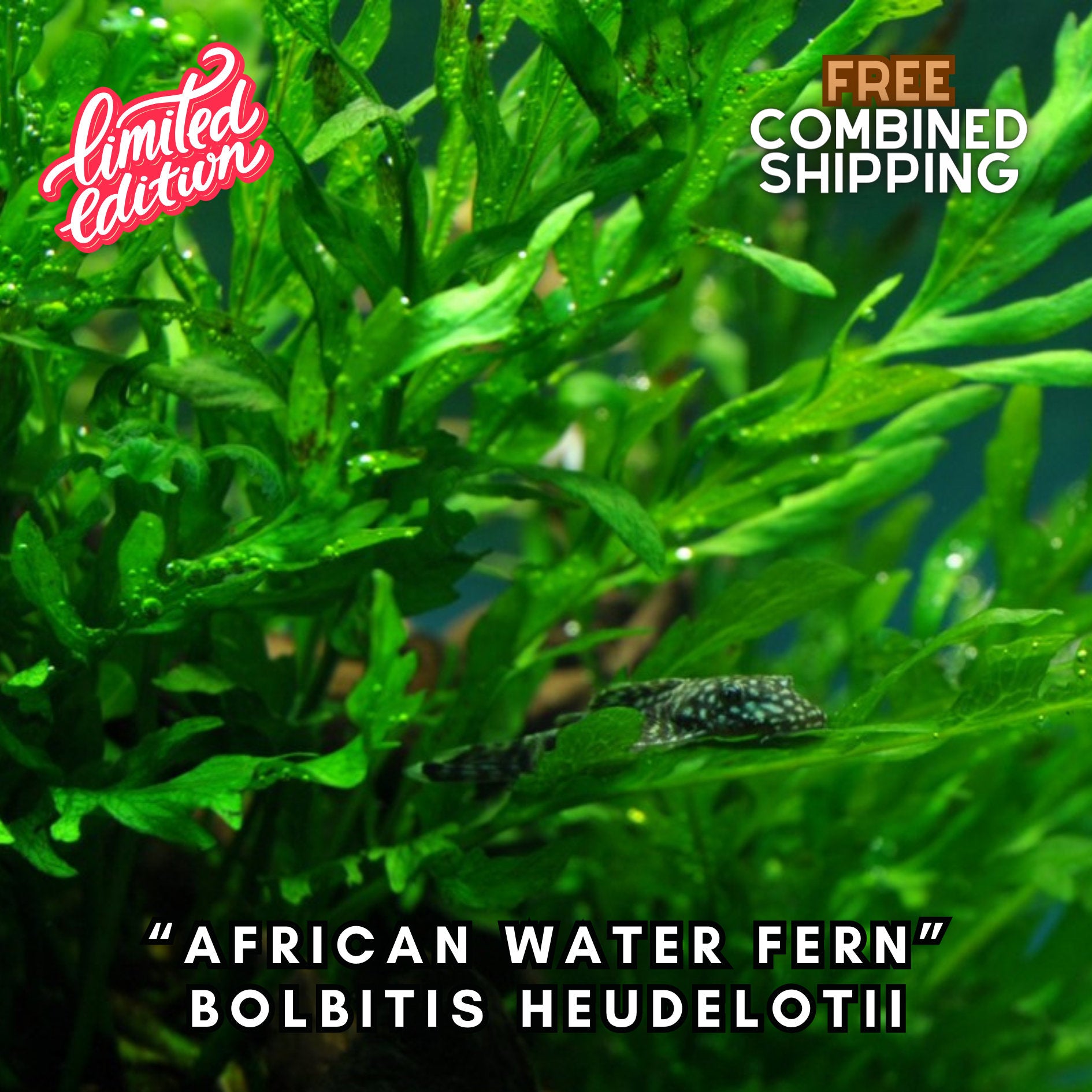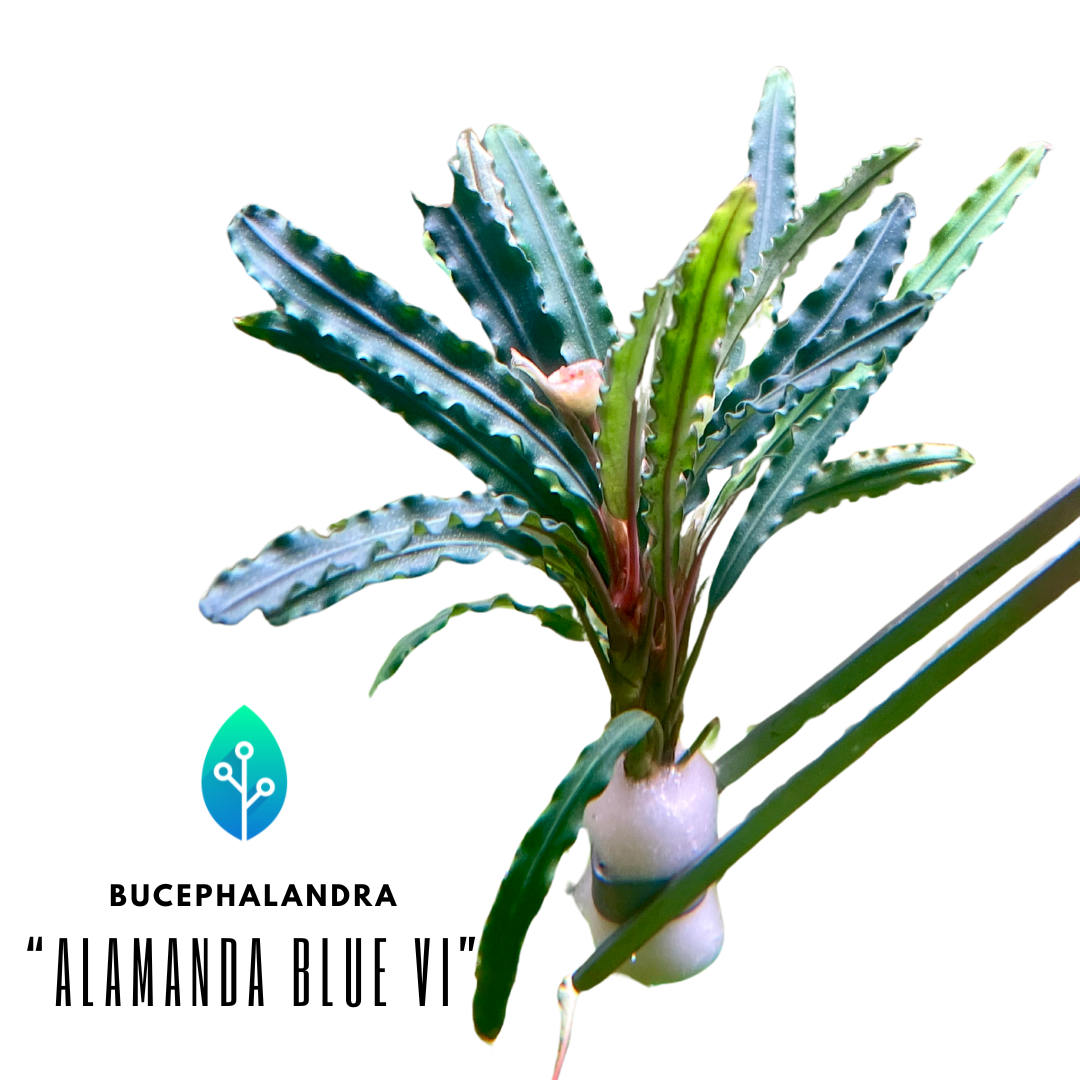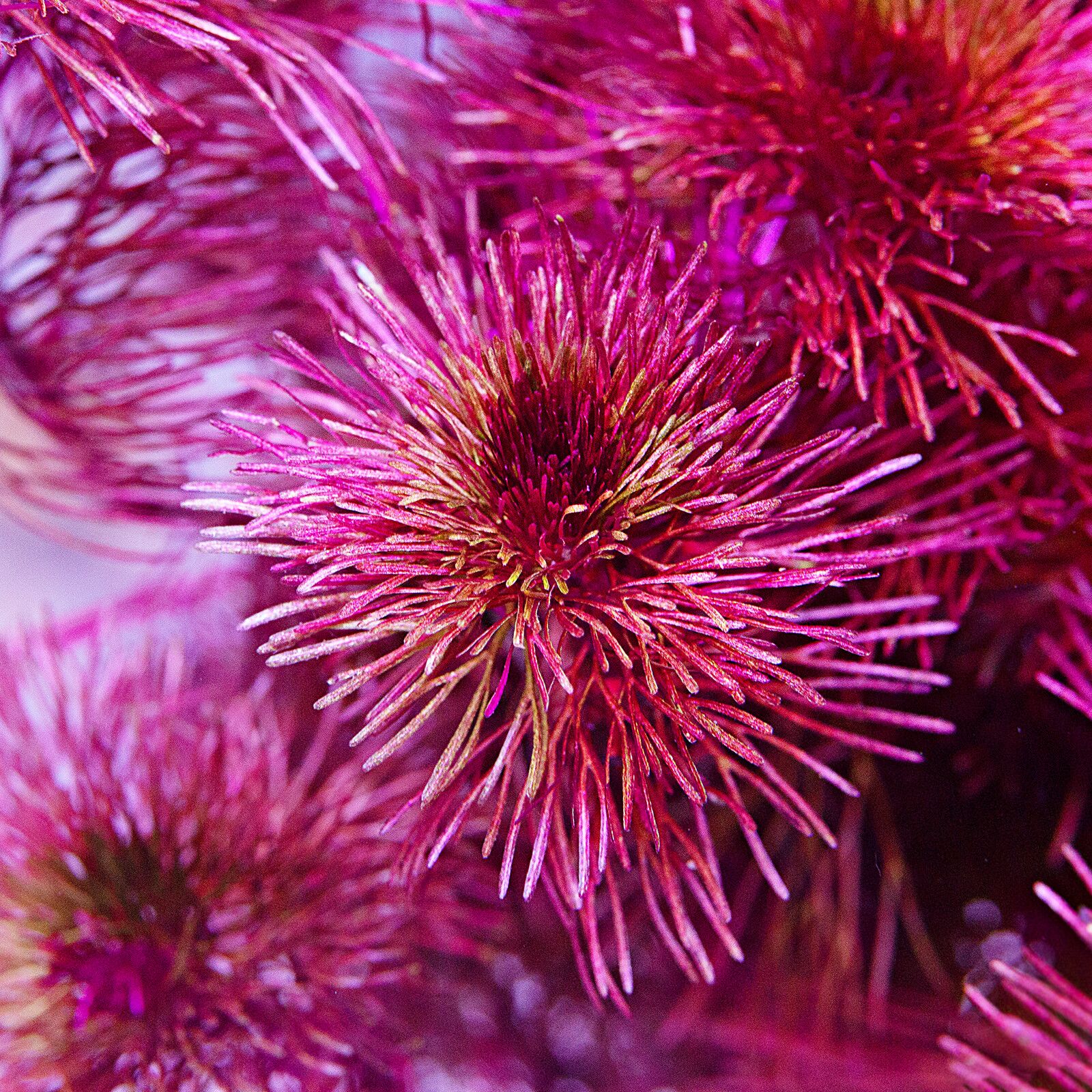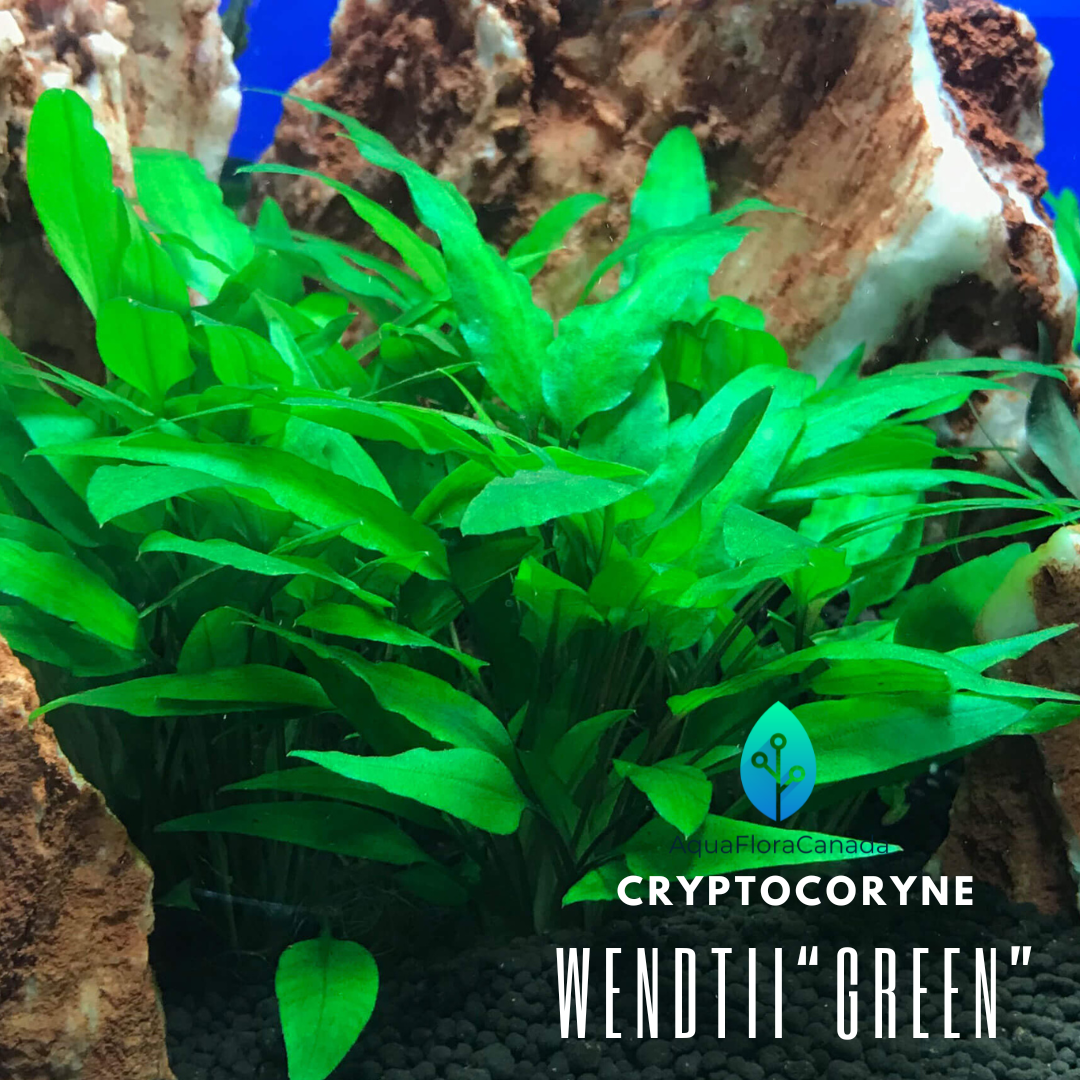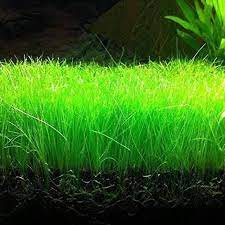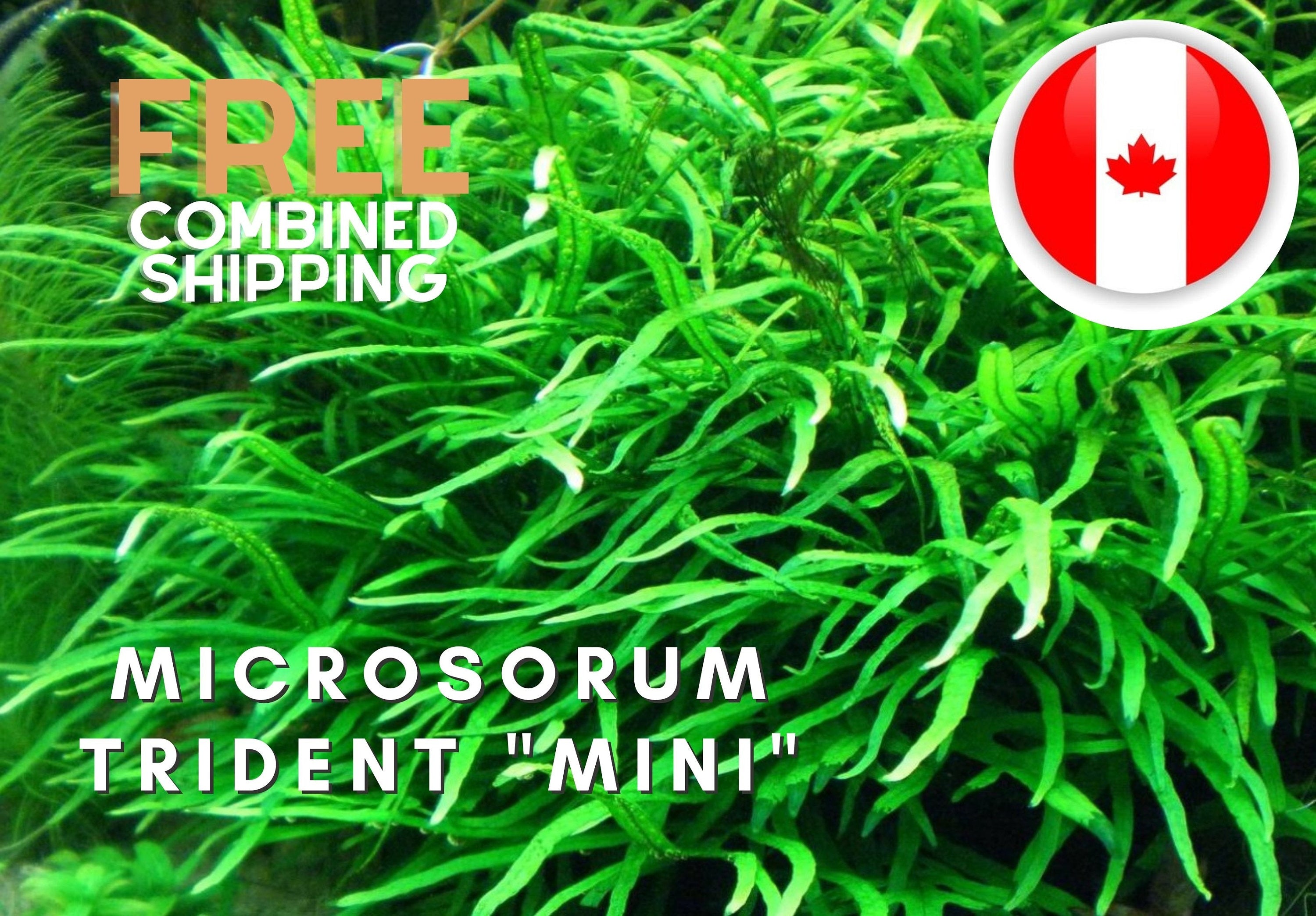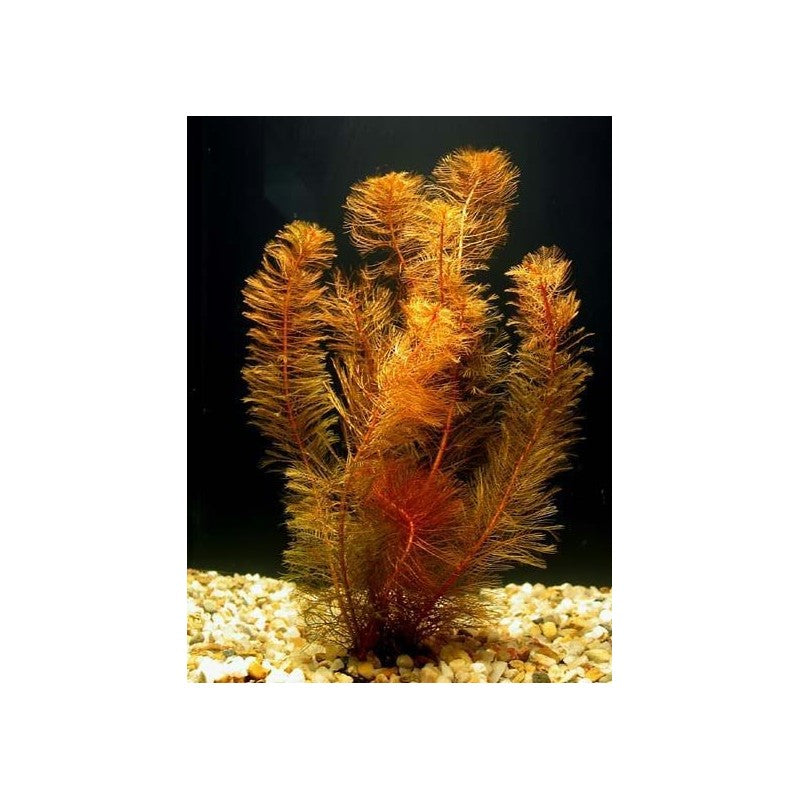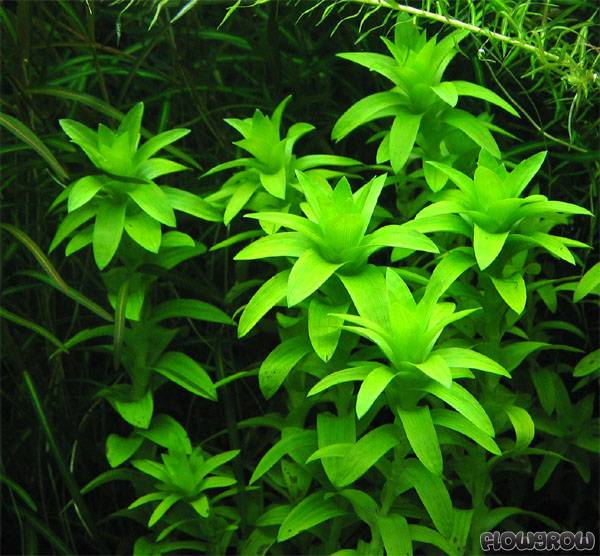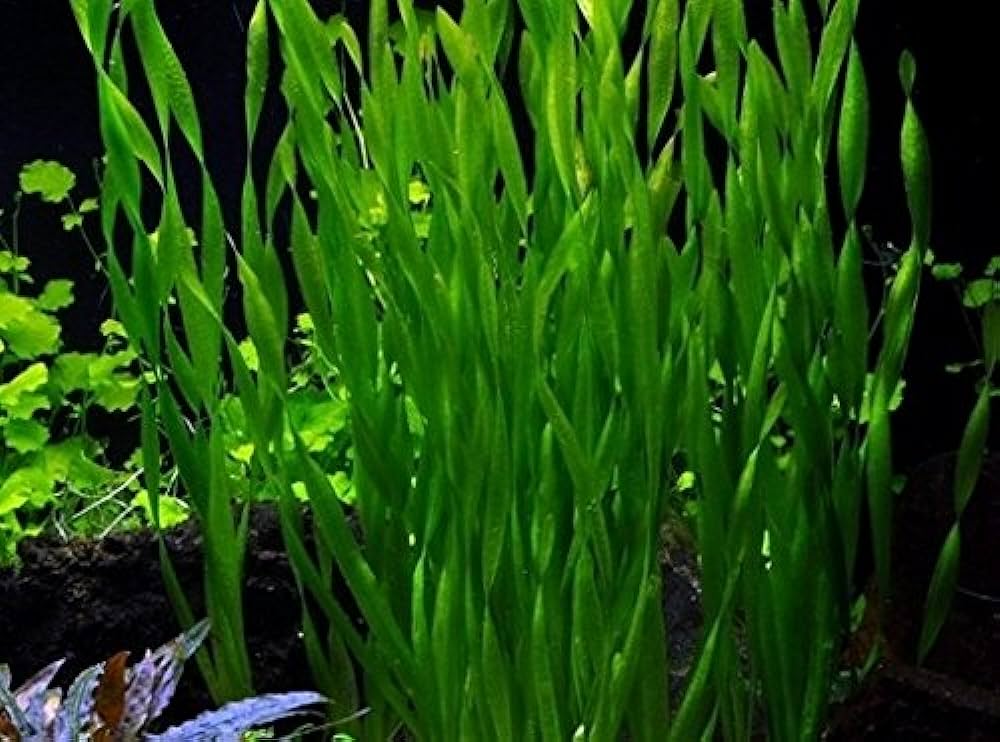1 Portion: approx 8cm x 4cm colony on coconut shell. About 15-20 rhizomes!
Bucephalandra is a popular genus of aquatic plants known for its hardiness, unique leaf textures, and variety of colors. When attached to a coconut shell, Bucephalandra can create a beautiful, natural-looking feature in an aquarium. Here’s a detailed overview:
Description
- Appearance: Bucephalandra species are known for their small, elongated leaves that can vary in color from green to deep red, purple, or even blue, often with iridescent hues. The leaves are typically thick and leathery with wavy or slightly serrated edges. Attaching these plants to a coconut shell creates a natural, rugged appearance that blends well into aquascapes.
- Size: Bucephalandra plants are generally small, with leaves ranging from 2-5 cm (0.8-2 inches) in length. The coconut shell can vary in size but typically provides a base of around 10-15 cm (4-6 inches) in diameter.
Habitat
- Native Range: Bucephalandra is native to Borneo, where it grows attached to rocks, driftwood, and other hard surfaces in rivers and streams.
- Natural Habitat: These plants thrive in shaded, slow-moving waters, often in areas with high humidity and consistent water flow.
Cultivation in Aquariums
- Light Requirements: Bucephalandra can thrive under low to moderate light conditions, making it suitable for low-tech aquariums. However, under higher light, some species may develop more vibrant colors.
- CO2 Requirements: While not strictly necessary, CO2 injection can enhance growth and coloration. Bucephalandra is well-suited for low-tech setups without CO2.
- Substrate: Since Bucephalandra grows epiphytically, it does not require substrate planting. Attaching it to a coconut shell mimics its natural growth on hard surfaces.
- Temperature and pH: It thrives in a temperature range of 20-28°C (68-82°F) and prefers slightly acidic to neutral water (pH 6.0-7.5).
Care and Maintenance
- Attachment: Bucephalandra can be easily attached to a coconut shell using fishing line, thread, or aquarium-safe glue. Over time, the plant’s roots will naturally anchor themselves to the shell.
- Trimming: Trimming is generally minimal. Occasional pruning of older leaves can encourage new growth and maintain the plant’s appearance.
- Propagation: Bucephalandra can be propagated by cutting the rhizome. New plants can be started by reattaching these cuttings to other hard surfaces like rocks, driftwood, or another coconut shell.
Aquascaping
- Uses: A coconut shell covered with assorted Bucephalandra species makes for a naturalistic and decorative element in an aquarium. It can be placed in the midground or foreground, depending on the tank’s layout.
- Companion Plants: Bucephalandra pairs well with other low-light plants like Anubias, Java Fern (Microsorum pteropus), and mosses (e.g., Taxiphyllum barbieri). It can also be combined with driftwood and rocks to create a cohesive and natural-looking aquascape.
Challenges
- Algae Growth: In high light conditions, Bucephalandra may be prone to algae growth on its leaves. Keeping light levels moderate and maintaining good water quality can help prevent this.
- Growth Rate: Bucephalandra grows slowly, so patience is required to see significant development. Regular but minimal maintenance will keep it healthy over time.
Attaching Bucephalandra to a coconut shell provides a unique and aesthetically pleasing feature in any aquarium. The combination of the plant’s diverse colors and textures with the natural look of the coconut shell can create a striking focal point that enhances the overall beauty of your aquascape.


